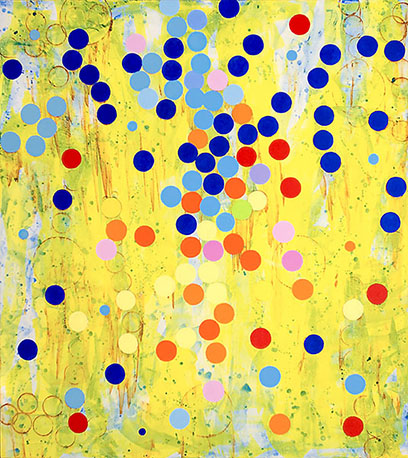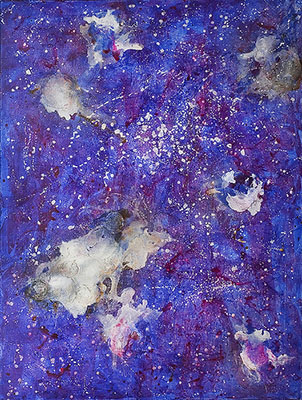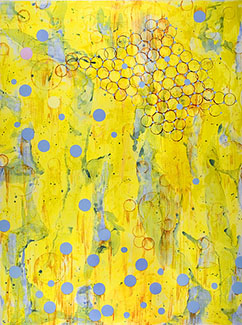 |
Contemporary art tends to ricochet between opposite ends of a conceptual spectrum that spans objective nature and subjective mind. The objective camp is occupied by photo-realists like Richard Estes, formalists like Donald Judd and land-artists like Richard Long who posit the existence of "hard" facts, independent of any perceiving consciousness. The subjective camp harbors artists like Francisco Clemente, Keith Haring and Jean-Michel Basquiat, all of whom claim the primacy of personal experience and deny the entire material apparatus in which it is embedded.
Painter Joan Moment, who has two overlapping shows of abstract works on view – one at LIMN Gallery in San Francisco, the other at JAYJAY in Sacramento – knowingly sidesteps this illusory divide; she has intuited and internalized the essential unity of consciousness and its objects, realizing in full, the capacity of paint to evoke and embody this unity.
 |
For precedents, take a look at the 17th century screen paintings of the Japanese Rimpa masters Tawaraya Sotatsu and Ogata Korin, and you immediately notice an obsession with combining aerial and eye-level views. Theirs, unlike those seen in Cubism, are not limited to discrete objects, but instead diffuse spatial views through the entire surface.
 |
.jpg) |
They also employ opaque, decorative shapes, often matte-black, above the apparent surface of an image whose textures, patterns, and rhythms parallel the elemental forces of nature. The affinities with Moment are obvious in works of calligraphy from the same period, particularly those by Hon’ami Koetsu. His “Poems and Paintings of Grasses and Flowers of the Four Seasons” is an obvious ancestor of Moment’s imprinted leaf paintings from the 1990s. It shares her sense of muted color and refined textures. It also possesses a kind of indefinite spatial structure in which the vertical strands of calligraphy occupy the same function and a similar pictorial space as the discs in Moment’s recent pictures. Much Japanese painting from the 13th century on deploys the device of quasi-aerial viewpoints where people and buildings are viewed through gaps in golden cloud forms.
 |
The people and buildings are depicted not from above but from eye-level, thus linking conventional and aerial viewpoints in a single picture in a manner that predicts some of Moment’s work but has few other descendants in Western art.
 |
 |
great review of a great artist!
the boundaries between art & poetics are gradually breaking down with this work.